#Bruno Dias
Text













'Chouso' Residence, Ansiao, Portugal,
Bruno Dias / Hugo Santos Silva
#art#design#architecture#interiors#minimal#portugal#interior design#nature#minimalism#retreat#bruno dias#hugo santos silva
166 notes
·
View notes
Text
I was watching a superbat compilation (by batidora 1399 on youtube btw) and i just-- i forgot bruce's name in spanish is bruno dias??? like, it's not bad or anything but like--
portuguese is closer to spanish than english and we kept it bruce wayne--
BRUNO DIAS IS SUCH A GOOD WAY TO TRANSLATE IT AND YET EVERY TIME I HEAR IT I JUST 😫😫😫😫
#it's like both my ears are tingling#I don't even understand spanish lol#superbat#bruce wayne#bruno dias#SERIOUSLY BRUNO DIAS????#bruno dias is a good adaptation tho#dc#dc comics#dcamu
39 notes
·
View notes
Text
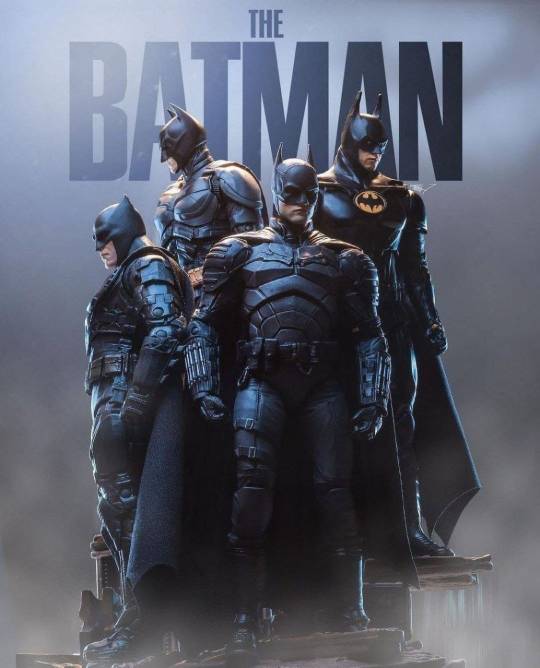
The Batman
#the batman#batman#revenge#superhero#bruce wayne#bruno dias#posters#dc superheroes#superhero movies#black armor
38 notes
·
View notes
Text


#batman vs superman#dc comics#dcmultiverse#dc#superman#clark kent#lois and clark#supergirl dc#supergirl#kara zor el#kara danvers#bruce wayne#batman#bruno dias#bruno diaz#robin#batgirl#joker#wason#guason
12 notes
·
View notes
Text
i’m constantly reminded of mortality, and it doesn’t bother me the way you’d think
repost from that time i deleted an article i spent 4 days on T-T
actual post this time since i somehow posted it privately yesterday 😭
---
Hi, I’m Questioning. And I like to waste my life away dedicate my free time to random hobbies that catch my hyperfixation interest on the fly. Currently, I’ve returned to something most important. Updating the encyclopedia-esque database of AlternativeTo.net. o_o

Let me finish.
See, I started exploring the world of Visual Novel (VN) makers, which led to me discovering the world of Interactive Fiction (IF)–their predecessor afaic. And that’s where it got strange. What I’ve found is interesting developments in terms of innovation and such. Like Undum (image)–“a game framework for building a sophisticated form of hypertext interactive fiction” according to its GitHub. IFWiki calls it “an authoring system for CYOA-style stories playable on web browsers.” It was created by I.D. Millington in 2009, released in 2010, had returned in 2018, and would’ve changed the IF genre (kinda like Twine did) if not for how hard it was to get into.
Undum’s flexibility and power have made it the engine that drove some of the most significant works in IF (The Play, Almost Goodbye). But it has always been relatively inaccessible. Undum is not the system of choice for writing straightforward hypertext games; it’s a challenging system to learn and use that demands the author build their own engine on top of it to drive their game logic. Consider Raconteur for “Undum with batteries included.” -Bruno Dias (x)
Enter Raconteur, “a friendlier way to write Undum hypertext fiction” that was announced by Bruno Dias in 2015. More accurately described as “a library of Undum tools that can get someone writing their story quickly.” Here’s the thing about the “library of Undum tools” part: Undum did not come prepackaged with any… even though they were required to write your game,…😐 which “meant doing a lot of your own tooling.” 😑
Yeah, no surprise it won the award for Best Technological Development in XYZZY Awards 2015.
But hold up, somethin’ ain’t right…
Undum’s only got 21 games on IFDB.org and Raconteur’s got 4… with 1 overlap with Undum. 😐
So~… wth?
Well, someone else had a similar question on intfiction.org in March and got Josh Grams’ opinion on it: JavaScript.
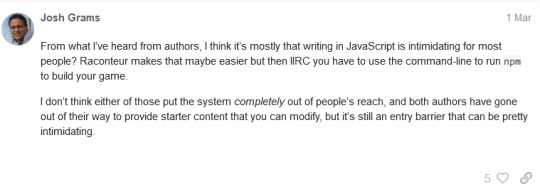
🤷🏿♂️
So even though Undum was designed as the visual version of bookbinding and with the specific goals “aesthetic” & “technical” in mind, shit’s too intimidating compared to alternatives.
I hoped [writing Undum in JavaScript] would make it accessible for a wider range of dabblers, requiring transferable skills rather than learning a new language. It also made it achievable to write and document over a few weekends: I didn’t have to worry about parsing, or creating a complete runtime. But the best benefit, and in some ways the one least exploited in practice, is the ability to use Undum as part of a bigger game. I imagined a strategy game with CYOA elements, or a piece of interactive fiction using natural language generation to be different each time. -Ian Millington (x)
And here’s~ where it gets a bit fucked.
Remember the other person who had a similar question–J. J. Guest? Well, they ended their post with “Was it simply superseded by Ink / Inky?”
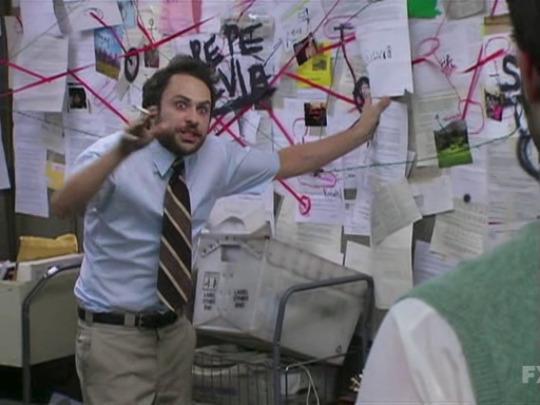
Let’s keep this simple:
Ink [image] is the core narrative engine itself, written in C#. It includes the code for the compiler. If you’re not technical, you don’t need to worry about this.
Inky [image] is our ink editor, which is a text editor with support for playing as you write. If you’re just starting out with ink, this is all you need.
inkle is the game development studio that created ink
(x)
So it’s “a narrative scripting language for games” and yet another CYOA maker. Why do I bring them up? Well, Inkle (the company) “was founded in 2011 by two Cambridge game developers [Joseph Humfrey & Jon Ingold] with a passion for storytelling and beautiful design” (x). They started off with their unique “inklebook” format, which had an early prototype game in ~2008 that Jon described as
an iPad-based choice-driven story made of ‘pages’ which stitched together into a single flow via frequent choice points. It was a lovely UI for a choice-based game, even in prototype form, and we had a strong scripting language underneath it – the first version of ink. (x)
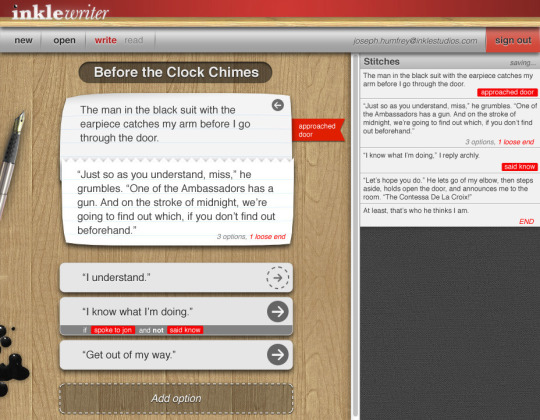
In January of 2012, they released “a web-tool for writing and reading simple interactive stories” called inklewriter. Joseph described it as “a simpler subset of the inklebook format” (x) and admitted “inklewriter was partly born out of the surprise that there isn’t anything out there for quickly and easily writing non-linearly.” (x)
After already having “moved away from developing inklewriter for a long time,” it went “permanent beta” in September of 2017 due to “increasing frequency of persistent bug-reports.” Sad news considering the statement “we’ve had hundreds of thousands of stories created by hundreds of thousands of users; we’ve won awards from school and library associations; and hopefully we’ve helped kickstart a few interactive writers careers” (x). And since writers (who became aware in time) were able to “rescue” their story from the bugs and potential wipeout with a simple Save Page As, it was probably a bit less heartbreaking when inkle revealed less than a year later that inklewriter would be shutting down completely in August of 2018. Seemingly because “it’s real work to fix the issues that arise” with the constant browser changes. 😐
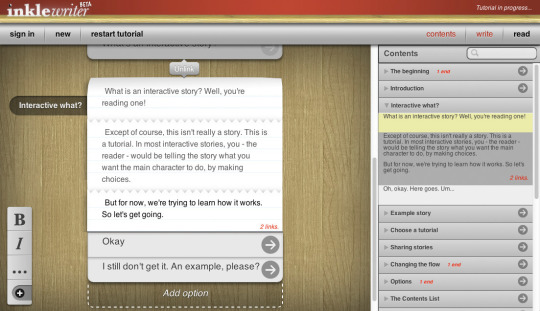
Only 7 months later, it returned in March of 2019. Stable, still free, and now open-source after developers in the open-source community “produced a full port of inklewriter to modern web-tech.” 🥳 Writers needed to make new accounts and import their stories to the new database, but that was it. And since the legacy version was (and is) still around, they could do it pretty quickly. (x)
But where dahell was I going with this? Let me tell you about the original connection first: Unity Integration.
The [ink-unity-integration] plugin provides you with everything you need to get started with ink in Unity. It automatically recompiles ink files as you edit them, and even comes with a simple previewer that lets you play stories directly within the Editor, without writing a line of code. (x)
Remember Ian Millington’s statement from awhile ago? “But the best benefit, and in some ways the one least exploited in practice, is the ability to use Undum as part of a bigger game. I imagined a strategy game with CYOA elements, or a piece of interactive fiction using natural language generation to be different each time.” (x)
Well,… Stoic Studio (announced that they) did it in January 2013 when they used inklewriter for The Banner Saga. Though, inkle recommends you use their ink scripting language instead for Unity projects. 🤷🏿♀️ A scripting language that was ported to JavaScript in May of 2016, btw. The port (inkjs) having its latest release just 6 freaking days ago while Undum and Raconteur had their last GitHub edits in 2018 & 2020 respectively.
Either way, Ian’s imagination of “a strategy game with CYOA elements” happened… with another mofo’s software. 😐
And what’s that? I left something out?
I left working on Undum to develop Varytale, a short lived commercial IF endeavour that shared a lot of the same aesthetic and narrative structure. And then I retired, and it lay fallow, aside from email help requests that still drip into my inbox. -Ian Millington (x)
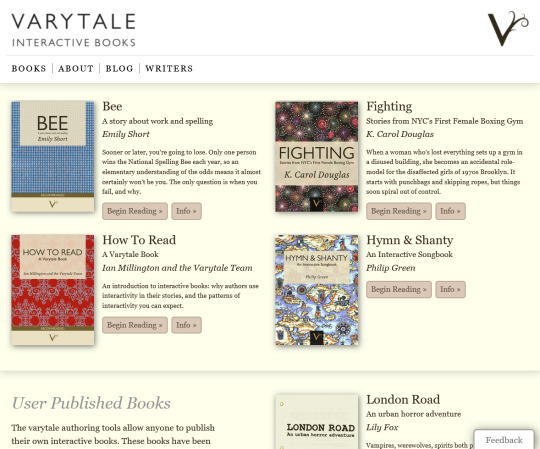
Let’s see what IFWiki says about this endeavor:
Varytale was a platform for authoring and publishing browser-based CYOA, created by Ian Millington and Alexis Kennedy; it occupied a point somewhere between Undum and StoryNexus [a comparatively mostly defunct endeavor from 2012].
The Varytale website was live from approximately 2011 to 2015. The first posts on Varytale’s blog appeared in June 2011. On March 7, 2014, Varytale posted a comment on the Varytale Facebook page saying, “The project is stalled, due to key people leaving the project. So there’s no news, and I’m not sure if or when there will be.” The last Wayback Machine snapshot of www.varytale.com/books was taken in September 2015. (x)
On its May of 2012 public beta announcement on FailbetterGames website, something slightly poignant was said.
But the technology is great [seriously] - it’s easily the most flexible and powerful tool of its kind, and it’ll be fascinating to see what people can do with it once the writers’ programme opens up.
And as it happens, Jon Ingold / Joseph Humfrey’s very elegant inklewriter has also just gone live [4 months prior].
(…)
…[inklewriter] covers some of the same territory as Varytale, but it’s (by design) simpler in concept and execution. (x)
Life is truly cruel.
If you check the archive from possibly days before its shut down in September of 2015, you’ll see 4 official books (Bee, Fighting, How To Read, Hymn & Shanty) and 3 User Published Books (London Road, Sixth Tower, Tillinghast). That’s 7… 7 books. 😐
But it’s not that sad. According to the Varytale blog’s 2nd to last post (in June of 2012), “we passed 50,000 reads across the seven books currently on our reader’s beta.” This was perhaps a full week after they released the floodgates and actually allowed people to start readin’. Das alot to me. They clearly succeeded in “building a platform for authors to write great books, and for publishers to publish them.” Even built a whole-ass “system that does generative design,” creating “artwork based on the author’s choice of patterned design or photograph” (x). Or, as we’d quickly say 12 years later, some AI shit.
So wut 👏🏿 in da fuq 👏🏿

Why’d they never get past the 7 book mark in the 2 years between Reader’s Beta and project stallation? Well,… there’s a hint at the end of that 2012 blog post: “We have a queue of people wanting to write content, who are been added a few at a time. So lots of hard work in the beta still to go.” hm~ 🤔
If The Way Back Machine had archives past January of 2013, we’d definitely know more, but this is it (i ain’t diggin’ a wider hole at this point). And what is it? I think it’s a matter of workload. Too much for too few people who had however much goin’ on in their lives. Remember much earlier this bit from IFWiki?
On March 7, 2014, Varytale posted a comment on the Varytale Facebook page saying, “The project is stalled, due to key people leaving the project. (x)
Maybe things weren’t smooth enough for awhile. Maybe it was something else for those 2 years prior. 🤷🏿♂️ And you know… the end of Emily Short’s blog post Writing for Varytale might hold the answer.
There are still some challenges about using the Varytale system, though it’s evolved tremendously over the course of beta. One of the biggest authorial challenges is that, while there’s the awesome structure tool shown above for looking at branching structure inside a storylet, it can be considerably more challenging to get a view of what’s going on at the macro level. And I’m not even sure what the tool for this ought to look like. The strength of storylets is that they can affect which other ones pop up in a fairly freeform way, and one can affect another (via their shared stat use) without explicit logic in either.
But that’s also what makes it really hard to graph how they will act. Most of the bugs that arose in Bee were related to this issue of envisioning the total structure of the work and detecting storylets that were going to break that structure. (x)
So in this case aswell, the innovations of Ian’s Varytale make it… (a bit) intimidating to work with. 😑Whether or not this difficulty was ever ironed out post-beta is unknown to me, especially considering the end of Ian’s thankful response to Tom H.’s suggestion for fixing the macro level problem: “When will I get chance to code it? That’s a whole other matter!”
…hm~
And on the same post lies magnus4444’s statement that “There isn’t a lot of documentation out there yet on the implementation of more advanced effects but, on the plus side, Ian is generous with advice and tips.”
🤷🏿♀️
So wtf do we have here. Effectively two developers (i’m simplifying it; fight me) who 1) made a CYOA maker (Undum & inklewriter) for very similar reasons, 2) put development aside to focus on other CYOA makers (Varytale & Inky), 3) had their neglected work taken up by open-source developers for the good of everyone, and 4) reaped the benefit of the other’s labor in some way. Now, here’s where we’re back to the sad part. Inkle’s version of the tale is the American Dream ™. Inklewriter was beloved by many and had mainstream success. Ian’s version is the harsh American Reality. Undum only bore 24+ games over the course of its 13 year existence on the internet and in the world of IF. And if a single person’s opinion is to be taken as fact… then the reason was simple: shit wasn’t easy to pickup. And thus, regardless of Ian & Bruno’s efforts, it (at this rate) is bound to become an obscure software regardless of its potential. All while Varytale remains gone and Inky (released in June of 2016) is still goin’ strong with 160+ games released using its Ink language/engine.
Which brings me back to the matter…
i’m constantly reminded of [my] mortality
#article#long post#looooooooong#Undum#Raconteur#Varytale#inklewriter#inky#inkle#AlternativeTo#Visual Novel#VN#Interactive Fiction#IF#GitHub#IFWiki.org#CYOA#I.D. Millington#Bruno Dias#XYZZY#IFDB#JavaScript#Ian Millington#inklebook#Stoic Studio#The Banner Saga#inkjs#Alexis Kennedy#Emily Short#once again i'm gonna say that i think the key reason for Ian's efforts being less successful than inkle's is marketing
1 note
·
View note
Text
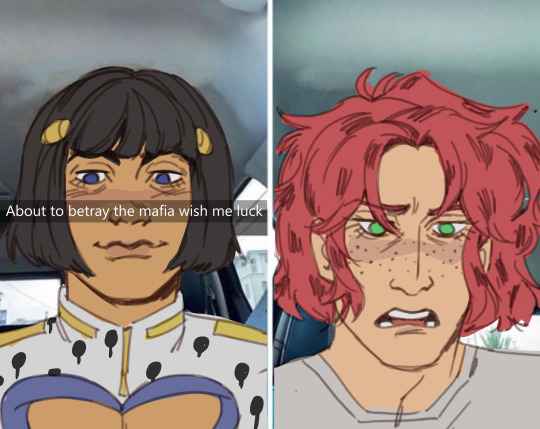




collection od doodles from the AU where Bruno survived in Diavolo's body and got stuck like that...
#dia!Bruno#fan art#art#fanart#jojo#jjba#golden wind#leone abbacchio#bruabba#bruno bucciarati#jojo's bizarre adventure
1K notes
·
View notes
Text
robins face hc (zoom to see it's not a grey blob)
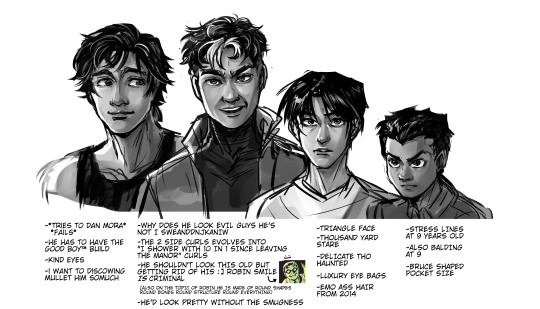
my marbles, i've lost them, i've written for weeks but i'm only good at drawing so this thing was born
for most unaware, im currently going thru the heaviest ugliest deepest fixation ever and it regards a family of bats, for my fixation to work i have to be able to draw them and this, this is my first attempt
did you know jason todd is precious to me? it shows?
#batman#dc comics#dick grayson#jason todd#tim drake#damian wayne#batfam#genuenly going insane last night i sent my friend a 30 minute audiio explaining the death poll#i hope dc fans look at this and think#nono see#im going insane#over their little concept of robin#cause i am#good soldier my ass q le costaba poner buen hijo en la tumba bruno dias imbecil ve a terapia y no a crime alley
189 notes
·
View notes
Text
okay rúben
96 notes
·
View notes
Text



100 notes
·
View notes
Photo



Bruno wishes you a happy Valentine’s Day, and gets swept up in a fan mob tornado of love 😊
205 notes
·
View notes
Text

some photo that is though ... aura etc etc
#ronaldo#bernardo silva#joao felix#ruben dias#bruno fernandes#whoever that guy is ruben grabs here#portugal nt
57 notes
·
View notes
Text
Ronaldo and Ruben in 1 photo?! BLESSED

60 notes
·
View notes
Text
New update to my football mural. I have been too persuaded by Kai Havertz's donkey ears celebration and his malnourished Victorian child lookin-ass. Welcome to the collection mister.
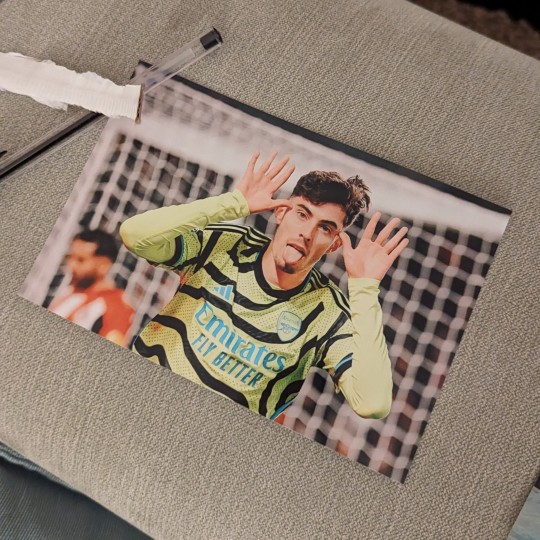
✋😛🤚

Willow our cat takes a look.
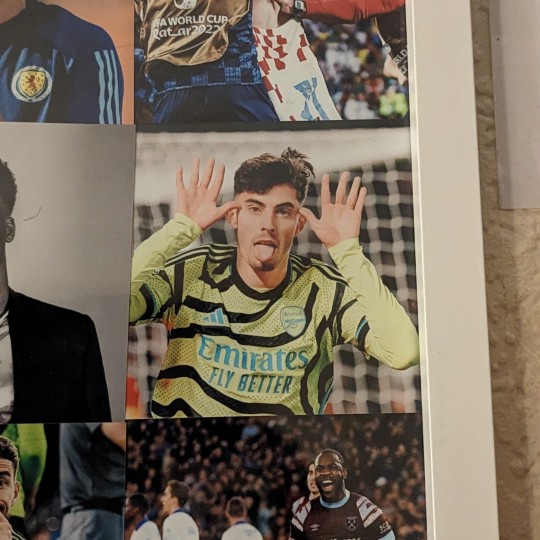

Back on the wall again!
#im so proud of this every damn day i look at it#rip to mason who had to make room for kai. i aint feeling it anymore sadly. i wish he wasnt at man u#harry kane#marcus rashford#jude bellingham#kieran tierney#kostas tsimikas#ben chilwell#ruben dias#andy robertson#bruno petkovic#dejan kulusevski#craig dawson#bukayo saka#kai havertz#declan rice#martin odegaard#jorginho#michail antonio#jarrod bowen#nayef aguerd#lucas paqueta#said benrahma#tomas soucek#england nt#west ham#arsenal fc#football mural
27 notes
·
View notes
Text




Alexa play: the boys are back
#Seleção de Portugal#football#rúben dias#cristiano ronaldo#joão félix#bruno fernandes#bernardo silva#gonçalo ramos#rafael leão
21 notes
·
View notes
Photo
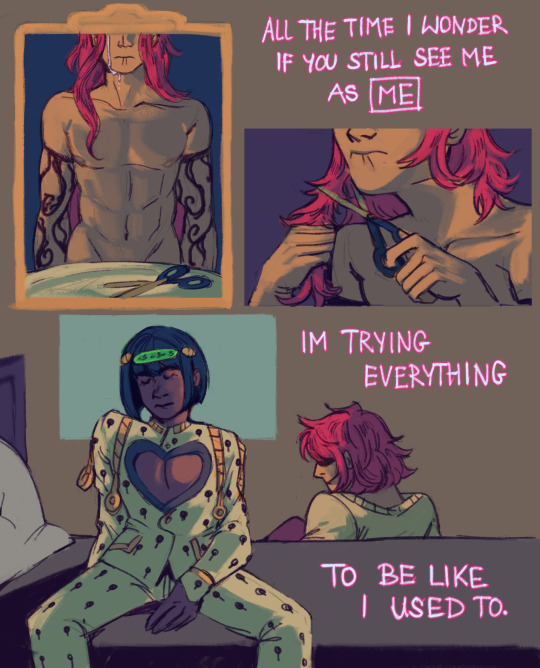
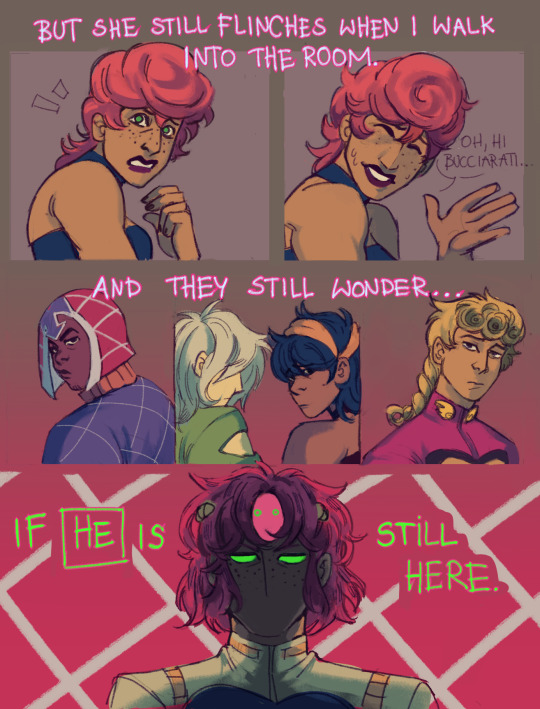
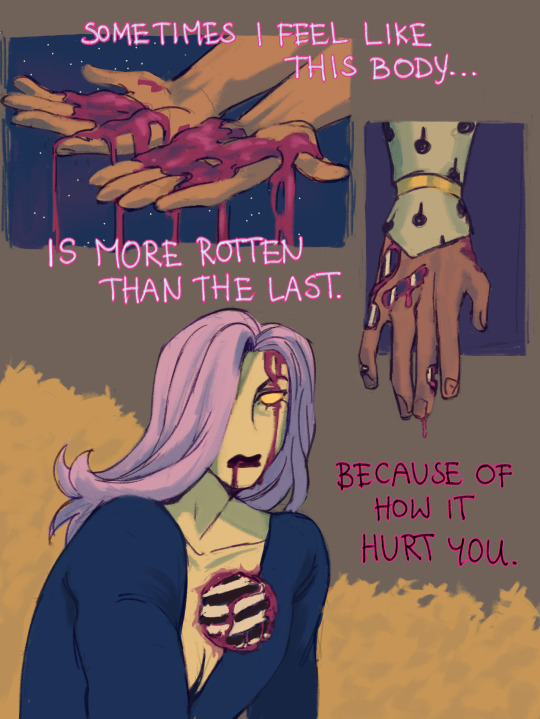
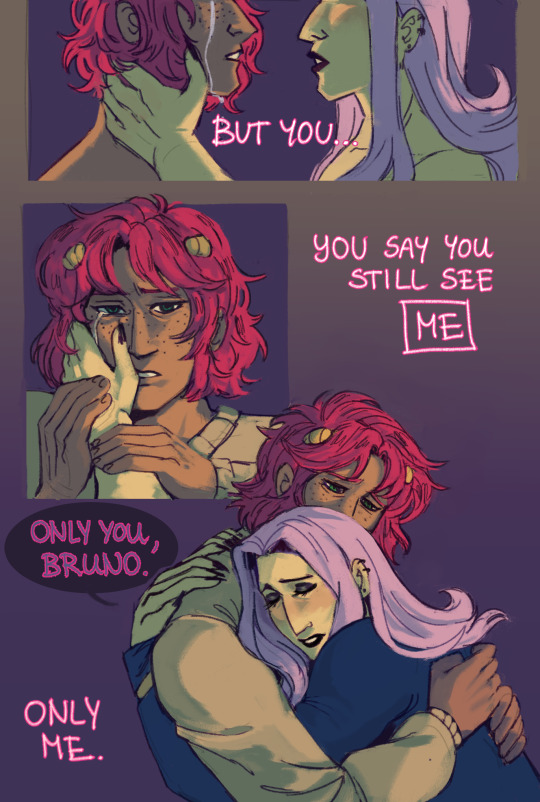
Comic about Bruno living on in Diavolo’s body...
3K notes
·
View notes
